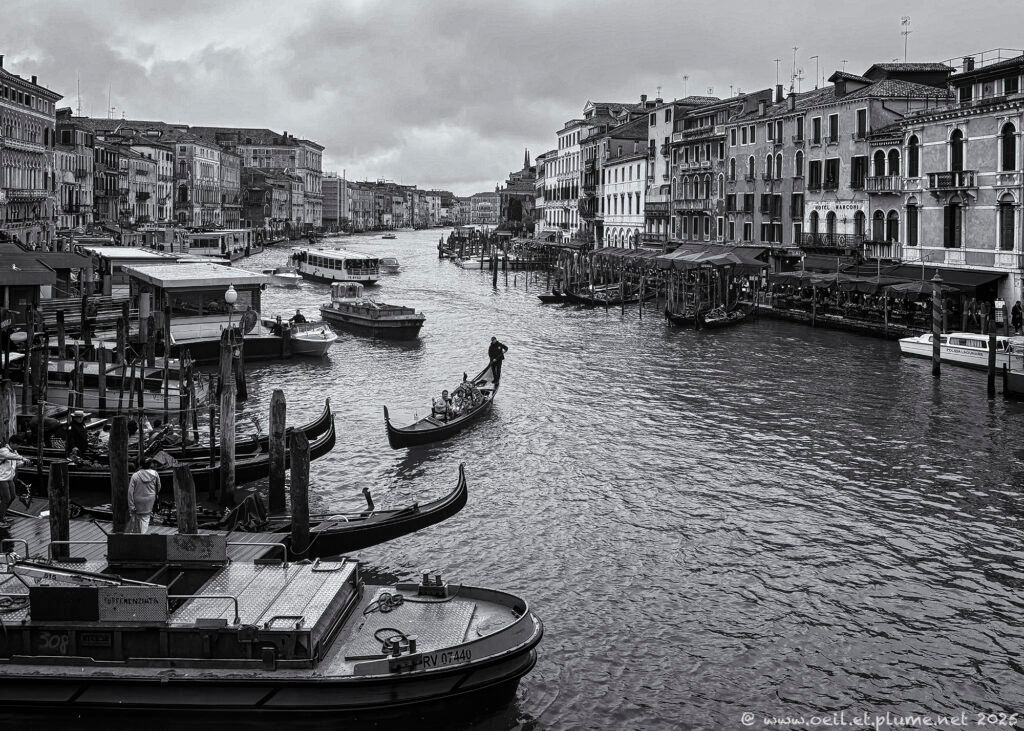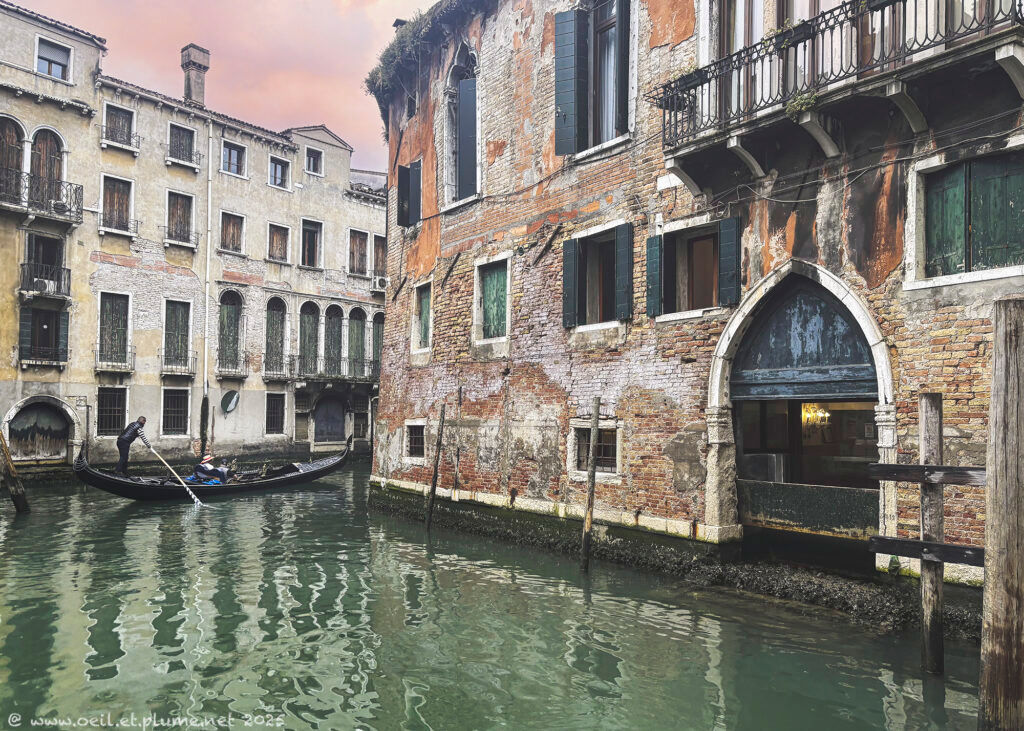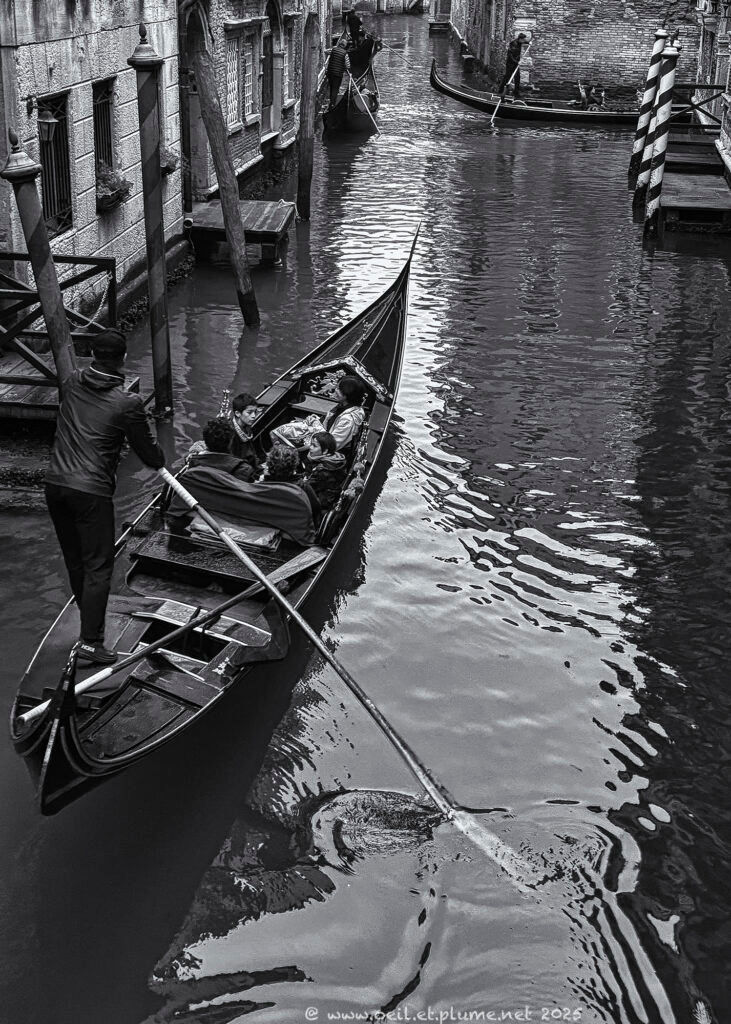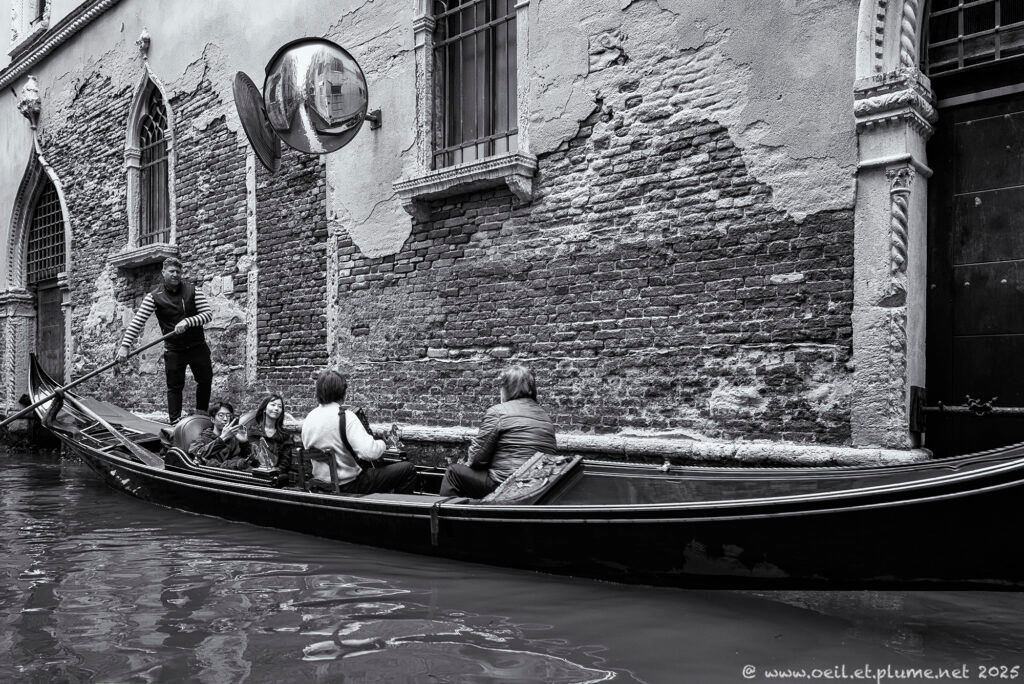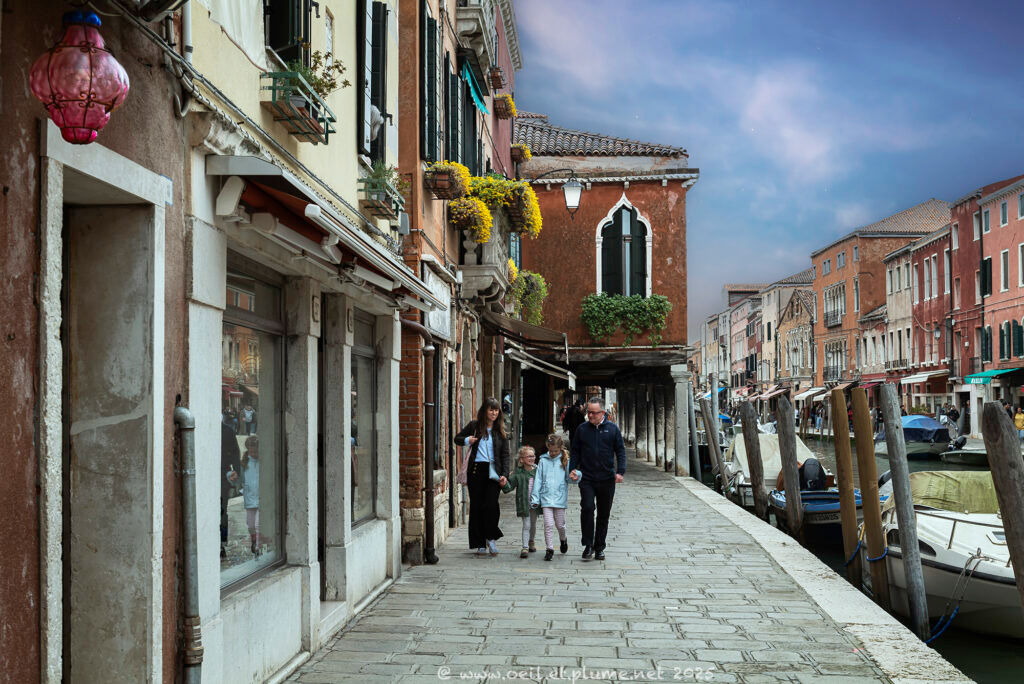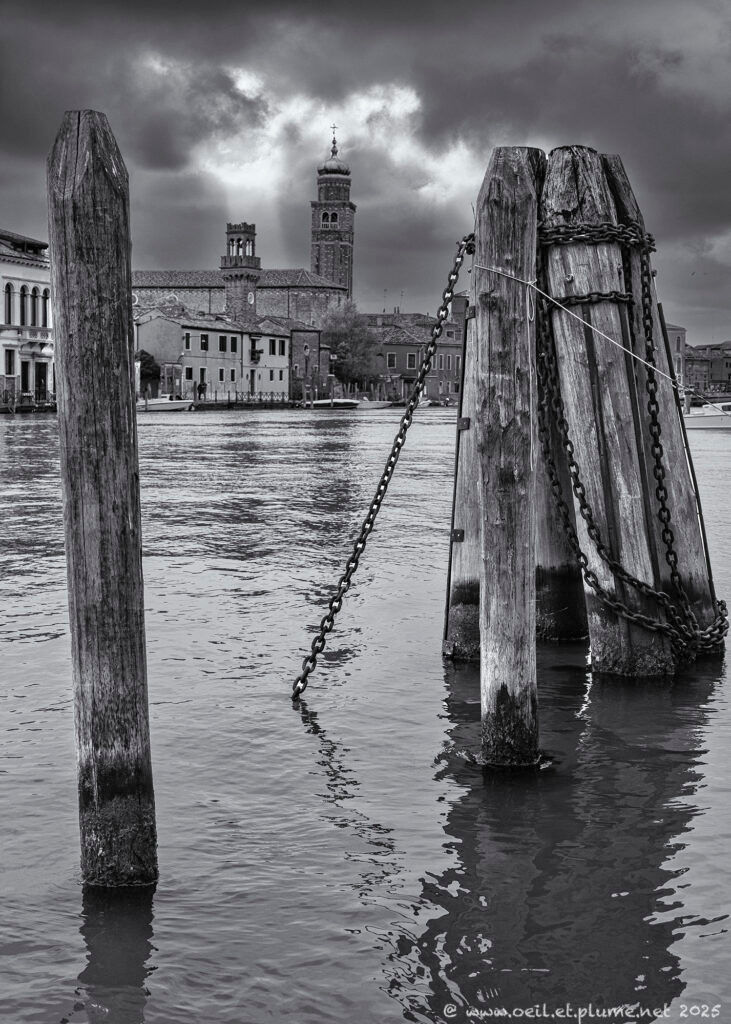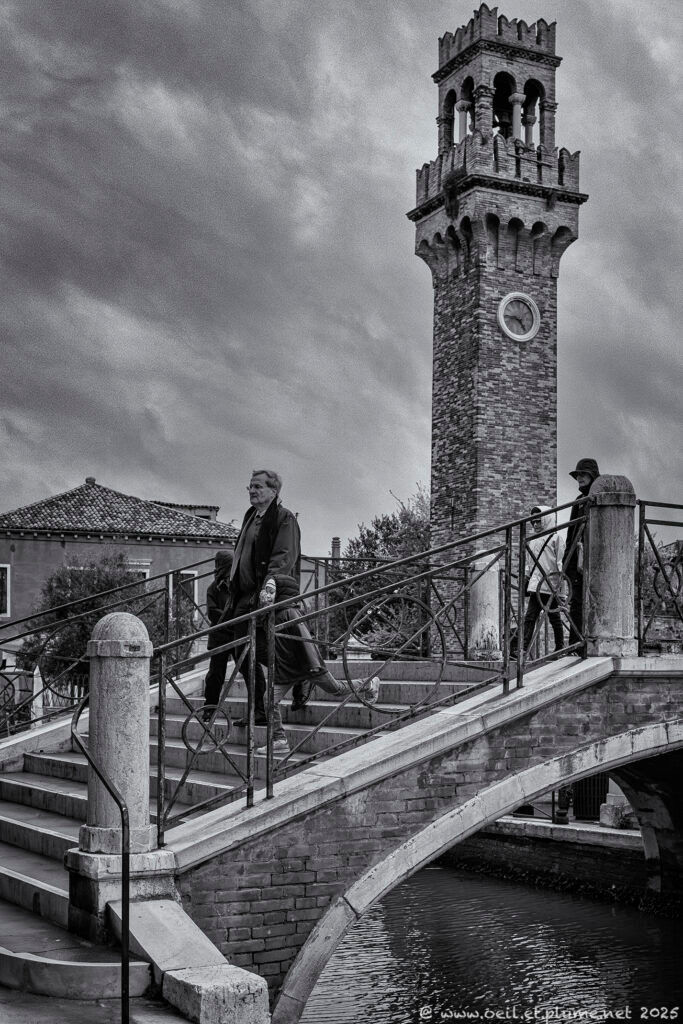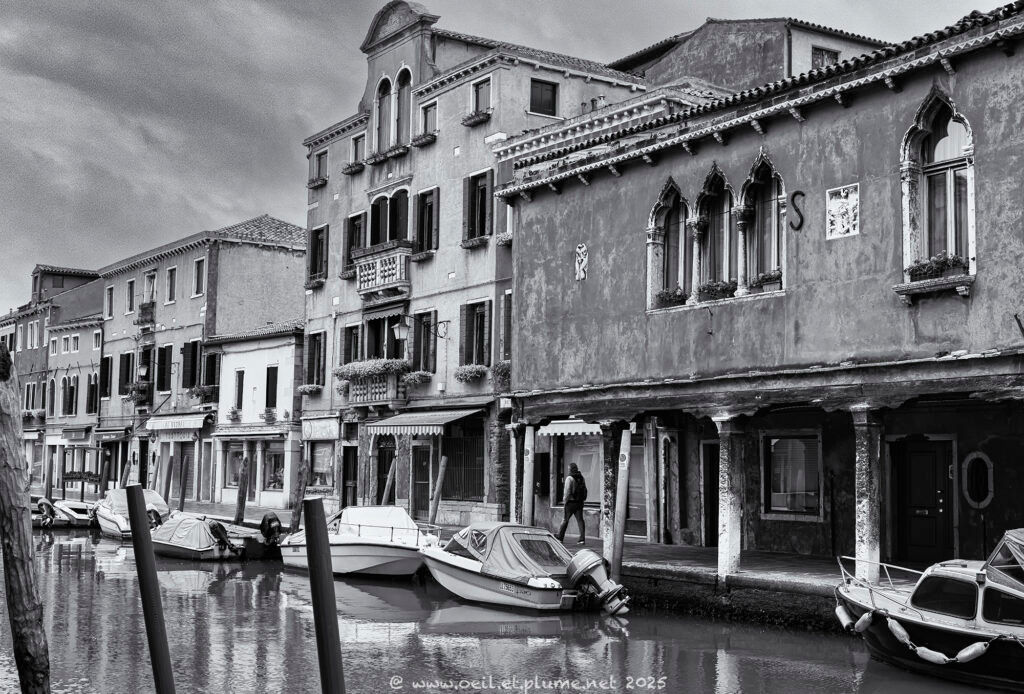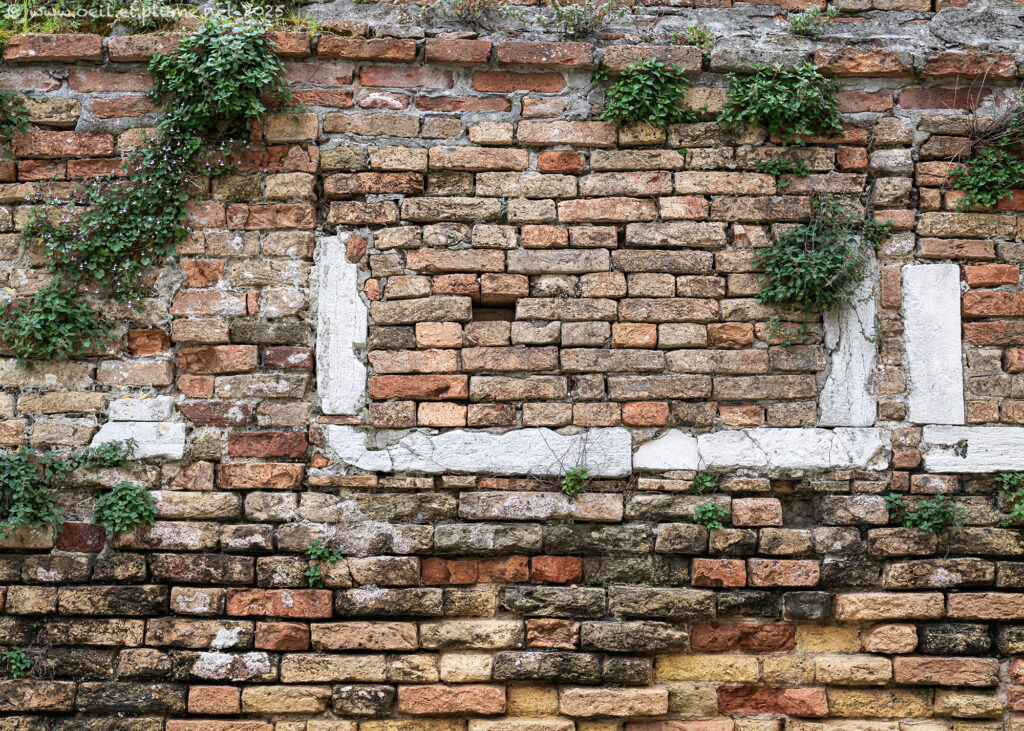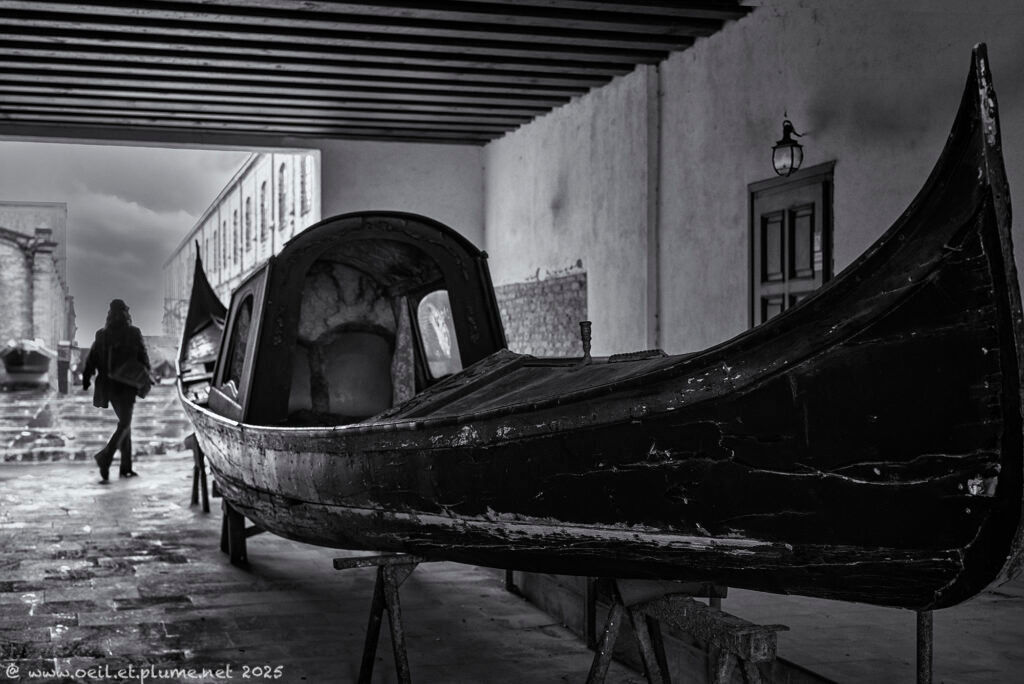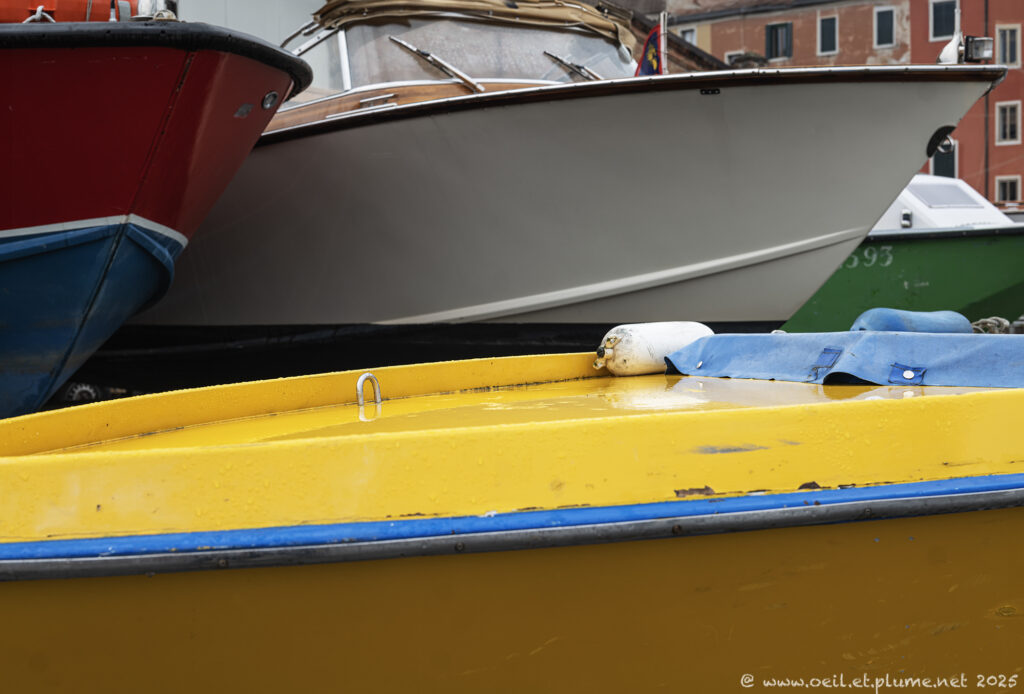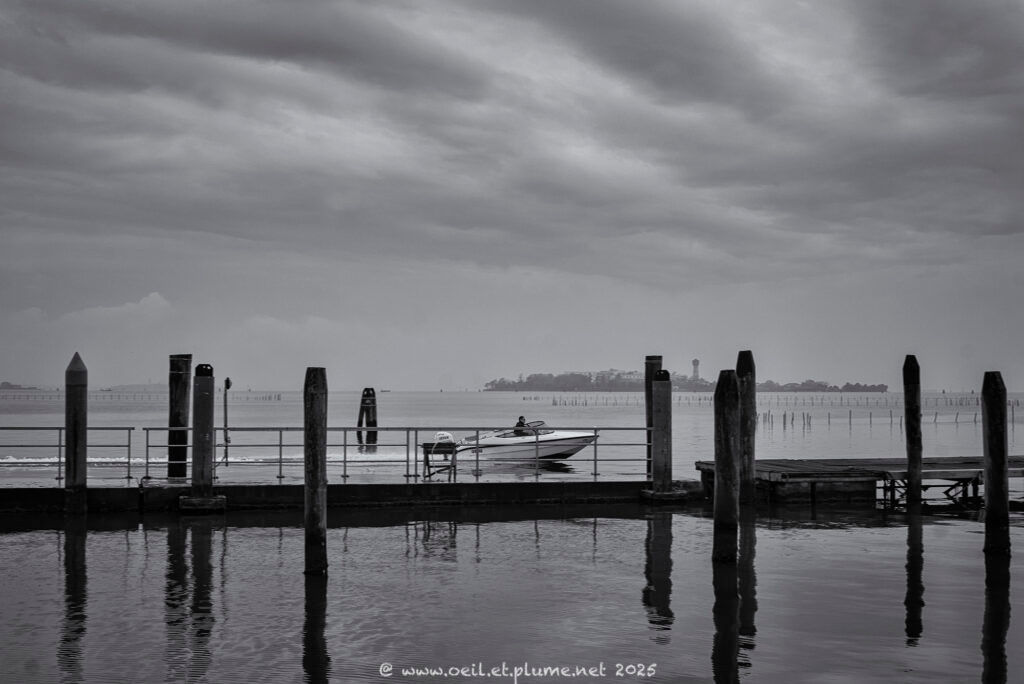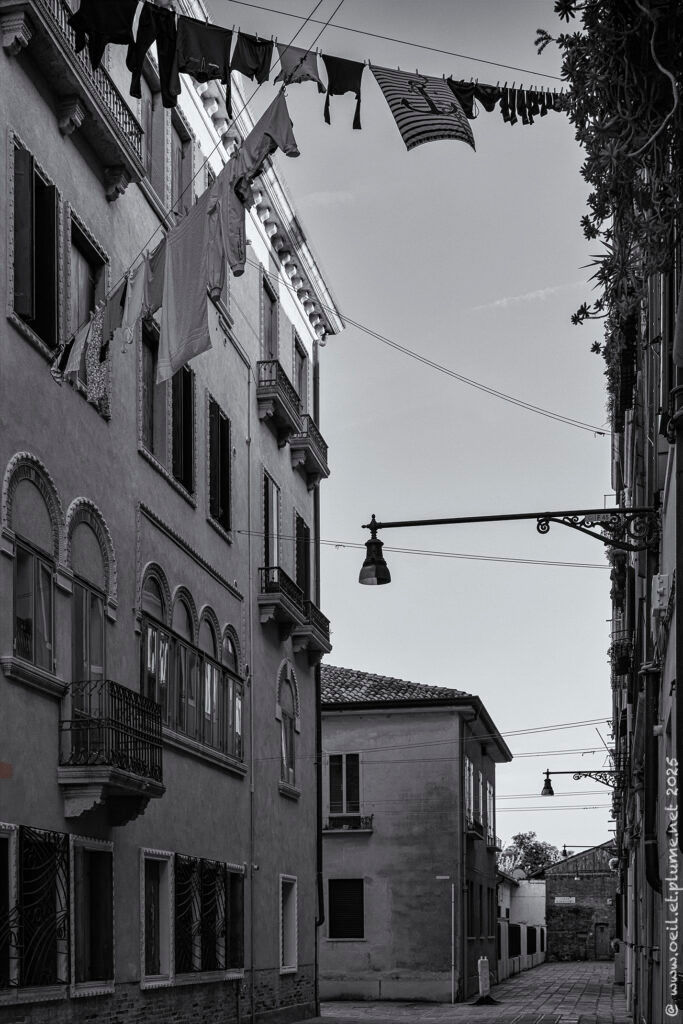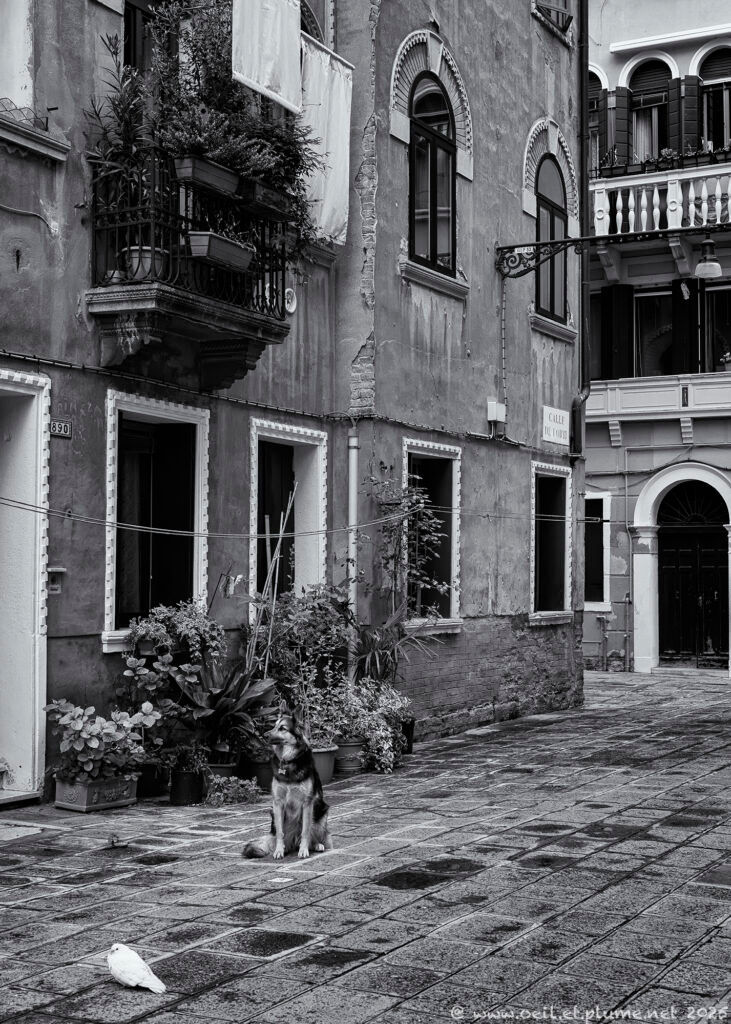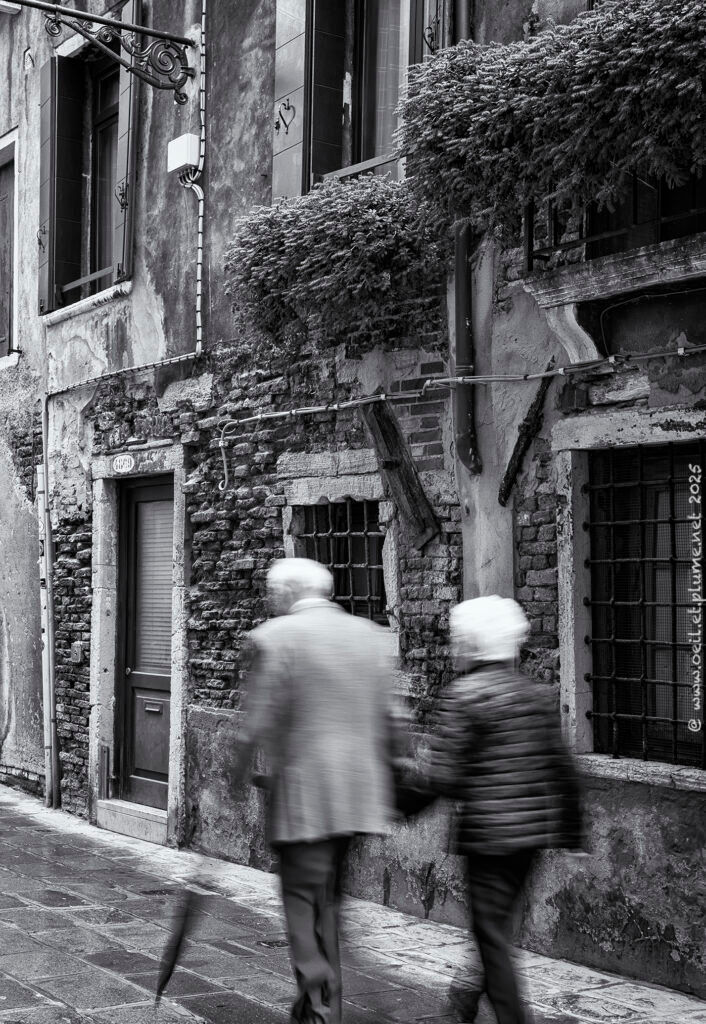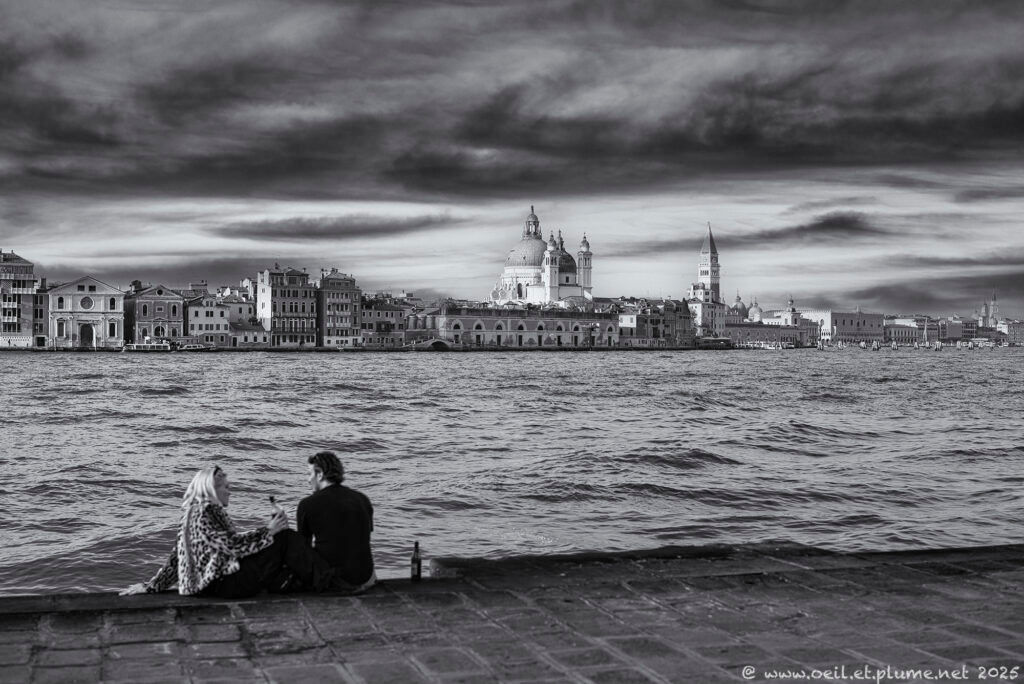Venice’s soul is best felt when gliding along the waterways of the historic city. The intricate labyrinth of navigable canals elegantly shapes both the urban landscape and the city’s atmospheric character. A voyage along the Grand Canal of the Serenissima is a fascinating—though not always serene—experience, both in the past and even more so today.
Gondola romance
I have much preferred slipping quietly into the historical neighbourhoods aboard an elegant gondola, gliding along narrow canals where Venice reveals its more intimate and timeless identity.
Venice was born from and on the water. The city was built on an archipelago of 118 small islands, interconnected nowadays by a network of navigable canals and over 400 bridges. The archipelago is protected from the Adriatic Sea by a thin strip of land forming the Venice Lagoon. Covering an area of approximately 550 km², the lagoon connects to the open sea through three main channels.
Venetian entrepreneurship
In the 5th century, the Venice Lagoon was essentially an inhospitable muddy swamp, unfit for navigation. However, its remote and marshy terrain offered safety and abundant food resources. People from nearby regions began to settle there to escape the growing insecurity on the mainland. Ten centuries later, the primitive settlement had become the Serenissima Venetian Republic – a solid city-state, a major maritime and commercial power and a flourishing hub for trade and art.
Venice’s historical transformation owes much to the outstanding ability of its inhabitants to reshape their environment through innovative engineering and architectural techniques. The waterways were created through extensive drainage and construction efforts, linking the islands of the archipelago and boosting the maritime expansion of the Venetian Republic.
Early settlers drained parts of the lagoon, dug canals, and reinforced the banks. While canals serving residential areas remained shallow, larger and deeper waterways—such as the Grand Canal, the Cannaregio Canal, and the Giudecca Canal—were developed later to accommodate larger ships. In addition, Venice’s early residents constructed a sophisticated system of canals and sewage pipes that carried waste out of the city and into the lagoon, helping to curb disease and improve public health.
Venice is a ‘floating city’ quite literally built on millions of wooden stilts driven deep into the mud until they reached a firmer layer of clay and hard sand. Vast amounts of timber were imported from across the Adriatic Basin to support Venice’s urban expansion. Most of the buildings and infrastructure were constructed using brick—a lightweight and fire-resistant material.
Gondola shapes
As gondolas are the iconic companions to Venice’s waterways, I was eager to explore their refined shapes and features. A gondola is asymmetrical along its length—a deliberate design that balances the weight and position of the gondolier who stands on one side of the boat. In the past, thousands of gondolas navigated the canals of the city and the lagoon. Today, Venice counts only 400 accredited professional gondoliers, all members of a traditional guild and working in the tourism sector. Gondola-making workshops, once common, are becoming rare. The variety of materials as well as the complex and meticulous craftsmanship involved makes a gondola as costly as a mid-range car.
Contemporary challenges
As the Adriatic Sea was once the source of Venice’s historical grandeur, it now threatens the city’s future. Venice is slowly sinking into the muddy bed of the lagoon, and it is increasingly affected by rising sea levels driven by climate change. The Acqua Alta phenomenon accelerates the erosion of buildings and infrastructure, causes frequent flooding across the urban landscape, and disrupts navigation along the waterways.
Yet Venetians continue to demonstrate their resilience and ability to overcome new challenges. Following a long development period, a system of barriers against high tides was constructed at the mouth of the three canals connecting with the Adriatic Sea. Consisting in floating dikes, the MOSE dam project helps protecting the urban settlements of the lagoon against high tides.
Venice face additional challenges, including the side effects of mass tourism on local infrastructures and social fabric. Historical quarters now host more and more shops, while long-time residents grow fewer. The increasing use of motorboats accelerates the erosion of building foundations and canal walls, further straining the delicate urban ecosystem.
The waterways of Venice remain a powerful testament to the ingenuity and resourcefulness of the early settlers. Hopefully they will continue illustrating the determination of its people to develop but also to preserve their fragile and extraordinary city.
Cheers,

